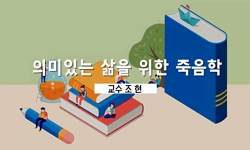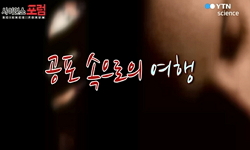This paper studied the fact that the duplex perception like fear or fascination of death would be closely related to the desire for erotism through the analysis on Kim, Dong-Lee’s main works including 「A Shaman’s Story」(1936), 「Azalea」(195...
http://chineseinput.net/에서 pinyin(병음)방식으로 중국어를 변환할 수 있습니다.
변환된 중국어를 복사하여 사용하시면 됩니다.
- 中文 을 입력하시려면 zhongwen을 입력하시고 space를누르시면됩니다.
- 北京 을 입력하시려면 beijing을 입력하시고 space를 누르시면 됩니다.

죽음에의 공포와 매혹 ‘사이’- 김동리 소설에 나타난 죽음의 이중성을 중심으로 = The‘Gap’between Fear and Fascination of Death - Focusing on the Duplicity of Death Shown in Novels by Kim, Dong-Lee
한글로보기부가정보
다국어 초록 (Multilingual Abstract)
The fundamental motive for Kim, Dong-Lee to create literature was to overcome the fear of death. Nevertheless, his literary works also show the hybrid aspect of fear, impulse, or mystery/fascination of death. Such a duplex perception of death is closely related to a strong desire for erotism aiming for communication/unity/conversion between separated/severed individuals. As the death means the extinction (collapse) of body which could be the fundamental cause for humans' separated/severed consciousness, it works as an opportunity to activate the imagination of communication/unity/convergence with others.
Out of his works, the initial work 「A Shaman’s Story」 shows the aspect of overcoming the fear of death through the sacred erotism. It might reflect the perception that the death could be overcome only through religion(myth) as an area that could not be overcome by humans’ efforts and will. 「Azalea」 and 「A Bird of the World Beyond」show that the desire for erotism is changed to an impulse to die. The chances of this change are the taboo such as incest and union between man and woman in different social class respectively. Because of this social taboo, the erotism between man and woman is inevitably suppressed in reality, which is led to the desire for the completion of erotism through death. Thus, in these two novels, the strong desire for physical erotism and sentimental erotism between lovers worked as a fundamental factor of impulse to die. And 「Face in a Well」 shows the fear and mystery/fascination of death at the same time. Here, the chance to perceive the death as an object of mystery/fascination is the death of human who used to be the only object of communication. Like this, the desire for communication with the dead, that is the sentimental erotism is the key factor of perceiving the death as an object of mystery/fascination.
Like this, in Kim Dong-Lee's literary works, the three types of erotism such as sacred erotism, physical erotism, and sentimental erotism are working as a key factor that changes the fear of death to an impulse to die, and also changes the death to an object of mystery/fascination. The fundamental cause for this novelistic tendency might be originated from humans’ method of existence. Humans exist as a single separated entity, which is the basic premise for the existence as an independent life. Therefore, humans cannot get out of the existential condition of separation/severance between individuals without getting out of body through death. Thus, as a single life, it is so natural for humans to feel afraid of death. However, paradoxically, the death is perceived as an object of mystery/fascination as it symbolizes the possibility to overcome the physical separation/ severance.
This paper studied the fact that the duplex perception like fear or fascination of death would be closely related to the desire for erotism through the analysis on Kim, Dong-Lee’s main works including 「A Shaman’s Story」(1936), 「Azalea」(1955), 「A Bird of the World Beyond」(1977), and 「Face in a Well」(1979).
The fundamental motive for Kim, Dong-Lee to create literature was to overcome the fear of death. Nevertheless, his literary works also show the hybrid aspect of fear, impulse, or mystery/fascination of death. Such a duplex perception of death is closely related to a strong desire for erotism aiming for communication/unity/conversion between separated/severed individuals. As the death means the extinction (collapse) of body which could be the fundamental cause for humans' separated/severed consciousness, it works as an opportunity to activate the imagination of communication/unity/convergence with others.
Out of his works, the initial work 「A Shaman’s Story」 shows the aspect of overcoming the fear of death through the sacred erotism. It might reflect the perception that the death could be overcome only through religion(myth) as an area that could not be overcome by humans’ efforts and will. 「Azalea」 and 「A Bird of the World Beyond」show that the desire for erotism is changed to an impulse to die. The chances of this change are the taboo such as incest and union between man and woman in different social class respectively. Because of this social taboo, the erotism between man and woman is inevitably suppressed in reality, which is led to the desire for the completion of erotism through death. Thus, in these two novels, the strong desire for physical erotism and sentimental erotism between lovers worked as a fundamental factor of impulse to die. And 「Face in a Well」 shows the fear and mystery/fascination of death at the same time. Here, the chance to perceive the death as an object of mystery/fascination is the death of human who used to be the only object of communication. Like this, the desire for communication with the dead, that is the sentimental erotism is the key factor of perceiving the death as an object of mystery/fascination.
Like this, in Kim Dong-Lee's literary works, the three types of erotism such as sacred erotism, physical erotism, and sentimental erotism are working as a key factor that changes the fear of death to an impulse to die, and also changes the death to an object of mystery/fascination. The fundamental cause for this novelistic tendency might be originated from humans’ method of existence. Humans exist as a single separated entity, which is the basic premise for the existence as an independent life. Therefore, humans cannot get out of the existential condition of separation/severance between individuals without getting out of body through death. Thus, as a single life, it is so natural for humans to feel afraid of death. However, paradoxically, the death is perceived as an object of mystery/fascination as it symbolizes the possibility to overcome the physical separation/ severance.
참고문헌 (Reference)
1 김동리, "황토기(黃土記)"
2 나병철, "환상과 리얼리티 : 소설 영화 동화 애니메이션에 나타난 환상서사" 문예출판사
3 김동리, "허덜풀네"
4 김창준, "토마스 만의 『마의 산』에 나타난 에로스와 죽음" 외국문학연구소 (39) : 29-52, 2010
5 김동리, "취미와 인생" 문예창작사 1978
6 이기상, "존재와 시간 용어해설" 까치 1998
7 김동리, "저승새"
8 김동리, "자연과 인생" 국제문화사 1963
9 김동리, "우물 속의 얼굴-우물을 들여다보는 아이"
10 김동리, "역마"
1 김동리, "황토기(黃土記)"
2 나병철, "환상과 리얼리티 : 소설 영화 동화 애니메이션에 나타난 환상서사" 문예출판사
3 김동리, "허덜풀네"
4 김창준, "토마스 만의 『마의 산』에 나타난 에로스와 죽음" 외국문학연구소 (39) : 29-52, 2010
5 김동리, "취미와 인생" 문예창작사 1978
6 이기상, "존재와 시간 용어해설" 까치 1998
7 김동리, "저승새"
8 김동리, "자연과 인생" 국제문화사 1963
9 김동리, "우물 속의 얼굴-우물을 들여다보는 아이"
10 김동리, "역마"
11 Georges Bataille, "에로티즘" 민음사 2006
12 김동리, "심장 비 맞다"
13 김동리, "실존무: 김동리창작집" 인간사 1958
14 Emmanuel Levinas, "시간과 타자" 문예출판사 2011
15 김동리, "생각이 흐르는 강물" 갑인 1985
16 김동리, "사반의 십자가"
17 Nietzsche, Friedrich Wilhelm, "비극의 탄생" 범우사 1984
18 김동리, "밥과 사랑과 그리고 영원" 사사연 1985
19 김겸섭, "바타이유의 에로티즘과 위반의 시학" 대구대학교 인문과학연구소 36 : 83-114, 2011
20 김동리, "바위"
21 Gaston Bachelard, "물과 꿈" 문예출판사 1998
22 김동리, "무녀도(巫女圖)"
23 김은숙, "무(巫)란 무엇인가" 우리마당 터 2003
24 김동리, "만자동경(曼子銅鏡)"
25 김동리, "등신불(等身佛)" 정음사 1963
26 김동리, "달(月)"
27 김동리, "나를 찾아서" 민음사 1997
28 김동리, "김동리 역사소설 <신라편>" 지소림 1977
29 신정숙, "김동리 소설의 문학적 상상력 연구" 연세대 2012
30 김동리, "고독과 인생" 백만사 1977
31 곽광수, "가스통 바슐라르" 민음사 1995
32 이상숙, "‘진달래’ 이미지의 변화와 그 의미: 북한 시에 나타난 ‘진달래’를 중심으로" 통일연구원 17 (17): 183-201, 2008
동일학술지(권/호) 다른 논문
-
관계성에 기반을 둔 관광객의 문화적 자기 특성의 차이와 융합적 관광상품 개발을 위한 탐색적 연구
- 한국문화융합학회
- 민웅기
- 2018
- KCI등재
-
인공적 자율성에 기반한 예술 작품 연구- 사이버네틱스와 발생 예술을 중심으로 -
- 한국문화융합학회
- 유원준
- 2018
- KCI등재
-
인문융합 교육에 대한 교수자의 관점: 국내 C대학교 사례를 중심으로
- 한국문화융합학회
- 이은주
- 2018
- KCI등재
-
- 한국문화융합학회
- 하성운
- 2018
- KCI등재
분석정보
인용정보 인용지수 설명보기
학술지 이력
| 연월일 | 이력구분 | 이력상세 | 등재구분 |
|---|---|---|---|
| 2026 | 평가예정 | 재인증평가 신청대상 (재인증) | |
| 2022-03-24 | 학술지명변경 | 한글명 : 문화와 융합 -> 문화와융합 |  |
| 2022-03-16 | 학회명변경 | 영문명 : The Korean Society of Culture and Convergence -> The Society of Korean Culture and Convergence |  |
| 2020-01-01 | 평가 | 등재학술지 유지 (재인증) |  |
| 2017-01-01 | 평가 | 등재학술지 선정 (계속평가) |  |
| 2015-01-01 | 평가 | 등재후보학술지 선정 (신규평가) |  |
| 2014-03-04 | 학회명변경 | 한글명 : 문학과언어학회 -> 한국문화융합학회영문명 : Munhak Kwa Eoneo Hakhoi -> The Korean Society of Culture and Convergence |
학술지 인용정보
| 기준연도 | WOS-KCI 통합IF(2년) | KCIF(2년) | KCIF(3년) |
|---|---|---|---|
| 2016 | 0 | 0 | 0 |
| KCIF(4년) | KCIF(5년) | 중심성지수(3년) | 즉시성지수 |
| 0 | 0 | 0 | 0.13 |




 KCI
KCI






